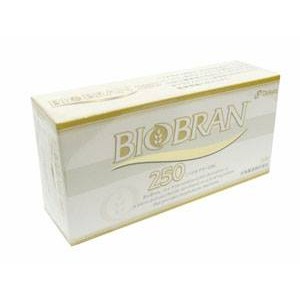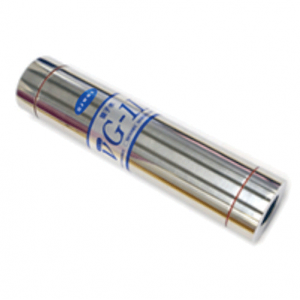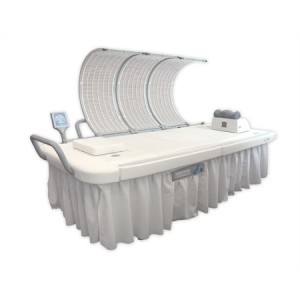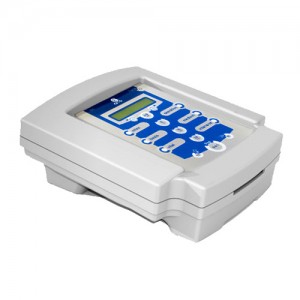QRS Research Directory U
Peer-reviewed abstract on the effects
of magnetics on physical ailments
The impact of treatment with magnetic fields on a variety of
physical ailments are presented in the following descriptions of recent
studies, published in peer-reviewed scientific journals.
Ulcers (Gastric and Duodenal)
Results of this study showed that the
administration of mill metric electromagnetic waves helped to normalize blood
properties, subsequently improving the effectiveness of more conventional
gastric and duodenal ulcer treatment.
M.V.
Poslavskii, Treatment of Peptic Ulcer
Electromagnetic Irradiation of the Millimetric Range , Sov Med, (1), 1989, p.
29-31.
This study examined the effects of millimeter wave (MW) therapy in
317 patients suffering from duodenal and gastric ulcers. MW therapy consisted
of 30 minutes per day exposure of the epigastric area apparatus,(10 mW/cm2,
5.6-mm wavelength) until complete ulcer cicatrisation was achieved. Results
showed a 95-percent rate of ulcer cicatrisation in patients receiving the
treatment compared to a 78-percent rate in controls. One year follow up showed
a 54-percent ulcer recurrence rate in MW-treated patients, which was markedly
less than the rate for controls.
M.V.
Poslavsky, Experience with Application of Millimeter-Range
Radiation for Treatment and Prophylaxis of Stomachand Duodenal Ulcer, Vopr
Kurortol Fizioter Lech Fiz Kult, (4), 1989,
p. 31-36.
This controlled study found extremely-high-frequency therapy to be
an effective treatment in patients suffering from duodenal ulcers. Treatment
consisted of 5-10 exposures, lasting 20-30 minutes, and making use of the
G4-142 apparatus (53.5-70.0 GHz frequency range).
M.V.
Teppone, Extremely-High Frequency
Therapy of Duodenal Ulcer, Klin Med, 9(10), 1991, p. 74-77.
This study compared the effects of
traditional drug treatment (TDT) to those of microwave resonance therapy (MRT)
in patients suffering from duodenal ulcers. Results indicated the mean hospital
stay for patients in the TDT group was approximately 22 days. Throughout this
period, ulcers healed in 38 percent of patients, were reduced in 17 percent,
showed no change in 43 percent, and increased in 2 percent. No pain relief was
seen in 32 percent. contrast, mean discharge time for patients in the MRT group
was approximately 12 days. Pain was generally stopped in 3-6 days. Complete
healing occurred in 81 percent, a decrease was seen in 16 percent, and ulcer
size did not change in just 3 percent. Remission occurred in 98 percent of such
patients.
S.S. Dudka,
A Comparative Assessment of the Efficacy of Drug Therapy and Microwave
Resonance Therapy for Ulcerative
Disease of the Duodenum," Fundamental and Applied Aspects of the Use of
Millimeter Electromagnetic Radiation
in Medicine. Abstracts of the 1st All-Union Symposium with International
Participation,May 10-13, 1989, Kiev , Ukraine , p. 195-197.
In this study, microwave resonance therapy (MRT) was
administered to 2642 patients suffering from duodenal ulcers and to 78 with
gastric ulcers. Treatment involved the use of a G4-142 device (53.6-78.3 GHz,
less than 2 mW/cm2 incident power) as well as Electronika-KVCh and Porog-1
devices. Patients received 6-12 daily exposures of between 20 and 25 minutes.
Results showed a total ulcer cicatrization in 80 percent of patients, and
arrested pain syndrome in almost 100 percent.
V.A. Kutzenok,Microwave Resonance Therapy of Stomach and
Duodenal ulcers, Fundamental and Applied Aspects of the Use of Millimeter
Electromagnetic Radiation in Medicine. Abstracts of the 1st All-Union Symposium
with International Participation, May
10-13, 1989, Kiev , Ukraine , p. 192-193.
Ulcers (Trophic)
This study examined the use of
magnetotherapy coupled with galvanization and intratissue electrophoresis in 86
patients suffering from trophic ulcers. A "Potok-1" apparatus with a
density of current equal to 0.05-0.1 mA/cm2 was used to create an electrical
field. The "MAG-30 apparatus for low-frequency magnetotherapy with
induction of 30 mT and area of exposure of 20 cm2 was applied to a trophic
ulcer site at the same time. Results led the authors to conclude that
magnetogalvanotherapy is the recommended treatment for trophic ulcers of the
lower extremities.
A.V. Alekseenko,
Use of Magnetic Therapy Combined with Galvanization and Tissue Electrophoresis
in the Treatment of Trophic
Ulcers, Klin Khir, (7-8),1993, p. 31-34.
This review article discusses the theoretical
and clinical applications of magnetic field therapy in the treatment of trophic
ulcers of the lower limbs.
A. Sieron, Use of Magnetic Field in
Treatment of Trophic Leg Ulcers, Pol Tyg Lek, 46(37-39), September 1991, p. 717
719.
This study looked at the effects of conventional trophic
ulcer treatment alone and in combination with alternating magnetic field (AMF)
or constant magnetic field (CMF) exposures in a group of patients suffering
from various types of trophic ulcers of the lower limbs. Results showed an
average hospital stay of 31 days in the CMF group and 27 days in the AMF group,
compared to 40 days among controls. Based on these and related findings, the
authors suggest combination AMF therapy to be most effective.
I.G. Sukhotnik,Comparative
Effectiveness of Using Constant and Alternating Magnetic Fields in the
Treatment of TrophicUlcers, Vest Khir, 144(6), 1990, p. 123-124.
This placebo-controlled study examined the effects of pulsed
electromagnetic fields in the treatment of decubitus ulcers in hospitalized
elderly patients with stage II and III pressure ulcers. Patients received daily
PEMF stimulation in conjunction with conventional treatment for a period of up
to 5 weeks. The findings were that combined PEMF/conventional treatment was superior
to conventional treatment and to the placebo received controls.
S. Comorosan,
The Effect of Diapulse Therapy on the Healing of Decubitus Ulcer, Romanian
Journal of Physiol, 30(1-2), 1993, p. 41-45.
Results of this study found that the
daily use of electromagnetolaser therapy decreased mean healing time in
patients suffering from lower extremity trophic ulcers to approximately 18
days, compared with approximately 26 days in patients receiving laser therapy
alone.
F.V. Galimzianov,
Laser and Electromagnetolaser Therapy for Trophic Ulcers of the Lower
Extremities in Chronic VenousInsufficiency, Vestn Khir Im I I Grek,
152(5-6),1994, p. 70-72.
This double-blind, placebo-controlled study found that
treatment with non thermal pulsed electromagnetic energy (PEMET) accelerated
would healing in spinal cord injury patients suffering from stage II and III
pressure ulcers. PEMET treatment consisted of pulsed 27.12-MHz energy produced
via a Diapulse device. Energy was delivered the use of a treatment head placed
in wound dressings, in 30-minute periods twice a day for 12 weeks or until
sores healed.
C.A. Salzberg,
The Effects of Non-Thermal Pulsed Electromagnetic Energy on Wound Healing of
Pressure Ulcers in Spinal Cord-Injured Patients: A Randomized, Double-Blind Study,
Wounds: A Compendium of Clinical Research and Practice, 7(1), 1995, p. 11-16.
This double-blind, placebo-controlled study examined the
effects of pulsed electromagnetic fields (75 Hz, 2.7 mT) applied 4 hours per
day for a maximum of 3 months coupled with conventional therapies in patients
suffering from trophic lesions. Results showed the treatment to have positive
effects, but only on small lesions.
M. Jeran, PEMF Stimulation of Skin Ulcers
of Venous Origin in Humans: Preliminary Report of a Double Blind Study, Journal of Bioelectr, 6(2), 1987, p. 181-188.
Urinary Problems
In this article, the authors report on their successful use
of magnetic-laser therapy in inflammations of the urinary system in a
urological clinic setting.
O.B. Loran,
Magnetic-laser Therapy in Inflammatory and Posttraumatic Lesions of the Urinary
System, Urol Nefrol (Mosk), (5),September-October
1996, p. 10-14.
Results of this study showed
magnetolaser therapy to be effective in the treatment of patients suffering
from urolithiasis (stone formation). Magnetolaser therapy involved the use of a
Milita device with a 35-mT magnetic field.
V.P. Avdoshin, Assessment of Magnetolaser Therapy in Comparison with Other Methods of Treatment of Patients withUrolithiasis, Fiz Med, 4(1-2), 1994, p. 102-103.
There are no products to list in this category.




